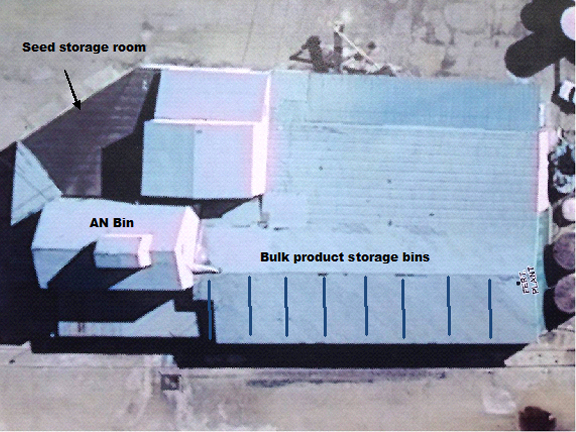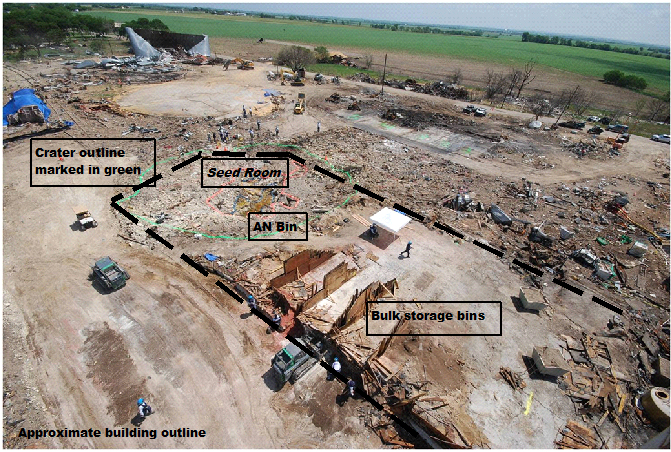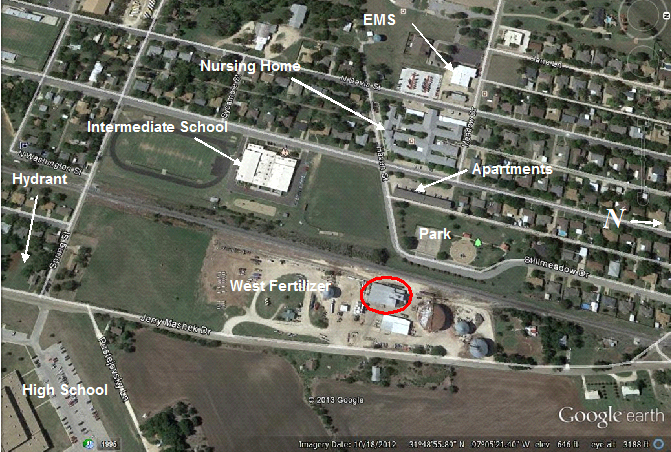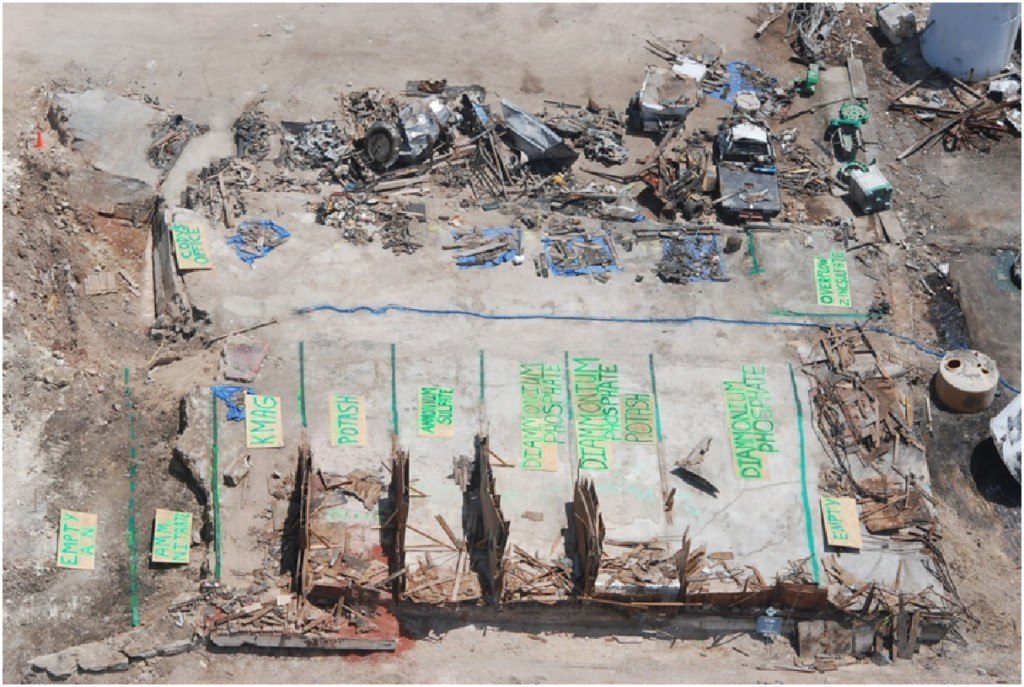Improvements in the response to large, complex fires was just one of the suggestions in a state fire marshal report on the fire and deadly explosion of a fertilizer plant in West, Texas, in the early evening of April 17, 2013.
While the cause of the deadly fire remains undetermined, the 55 page report intended to be a guide to prepare future firefighters in handling large, complex fires, outlined a number of suggestions to reduce the risk to fire personnel and prevent injuries when fighting these types of fires.
The fire involved a 12,000 square foot wood frame seed and fertilizer building at the West Fertilizer Plant, known as the Bulk Processing Plant, which had no fire resistance rating. The Uniform Fire Code wasn’t published until 1971 after the building’s construction sometime in the 1960’s.

In addition, at the time the building was constructed there were no requirements for sprinklers.
According to the report, the building contained bins of ammonium nitrate pellets – about 20-30 tons – and other bulk chemicals.
As the fire raged, the building’s roof collapsed and an explosion rocked the city of approximately 2800 people. The blast killed 10 firefighters and five civilians. Several firefighters suffered serious injuries and more than 200 civilians were injured, the report noted.
The explosion created a 90 foot wide and 10 foot deep crater and destroyed or damaged 500 structures in a 37 block area. Pieces of debris were documented as far away as 2.5 miles and the reported noted that the explosion registered 2.1 on the earthquake Richter scale.

Destroyed buildings included three schools, a West EMS building, a nursing home, an apartment complex and several single family homes. Three West Volunteer Fire Department fire trucks were also destroyed by the fire and explosion.

Insured losses as a result of the fire and explosion were estimated to be $100 million.
The report recommended improvements in fire department operations indicating that during the West fire, communication was lacking and senior level personnel didn’t take a unified command. The report stated that there was “unstructured emergency operations lacking in direction and supervision.” The reported noted that “The West VFD was not trained or equipped to conduct an operation of this complexity, involving a large commercial occupancy filled with hazardous materials that possessed explosive properties.”

Lastly the report stated that the residential fire attack used was not adequate for this type of large, complex fire.
Neither the City of West nor McLennan County has adopted fire or building codes, the report stated. In addition, the state of Texas Local Government Code only allows counties with a population of 250,000 or more or those adjacent to counties with that population to adopt a fire code.
Besides improved communications among fire personnel, the report outlined training recommendations and legislative considerations regarding current fire and building codes as well as sprinkler requirements.
Was this article valuable?
Here are more articles you may enjoy.

 Poll: Consumers OK with AI in P/C Insurance, but Not So Much for Claims and Underwriting
Poll: Consumers OK with AI in P/C Insurance, but Not So Much for Claims and Underwriting  Travelers Survey: Distracted Drivers Making US Roads More Dangerous
Travelers Survey: Distracted Drivers Making US Roads More Dangerous  Report: Vehicle Complexity, Labor ‘Reshaping’ Auto Insurance and Collision Repair
Report: Vehicle Complexity, Labor ‘Reshaping’ Auto Insurance and Collision Repair  Vintage Ferrari Owners’ Favorite Mechanic Charged With Theft, Fraud
Vintage Ferrari Owners’ Favorite Mechanic Charged With Theft, Fraud 